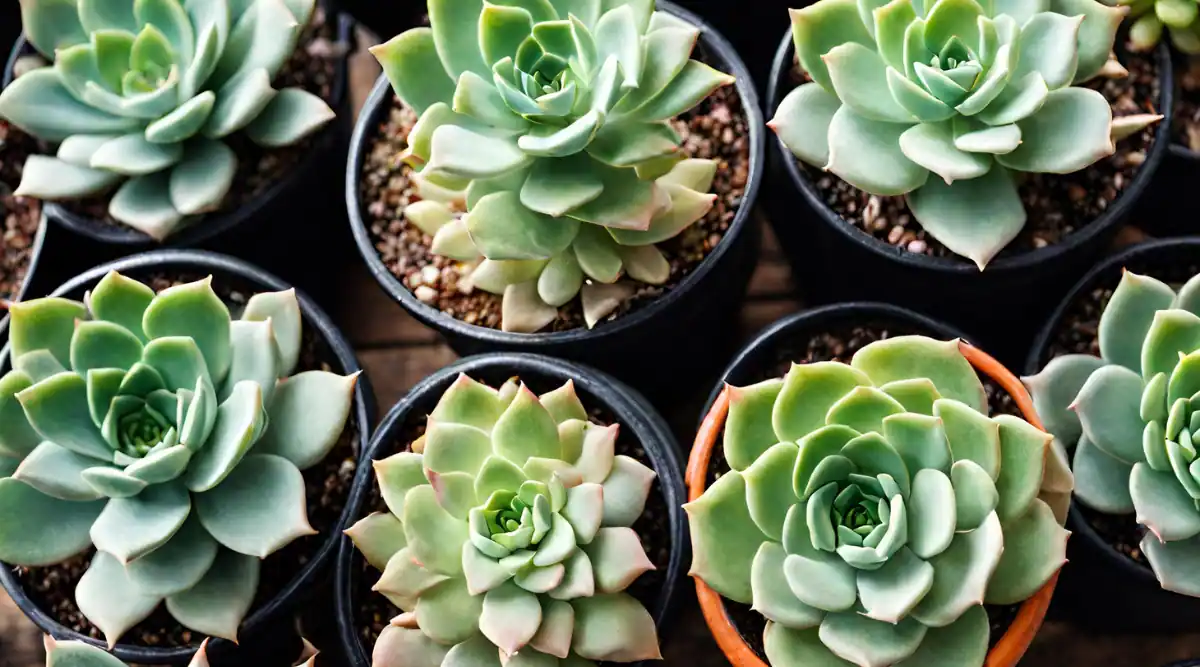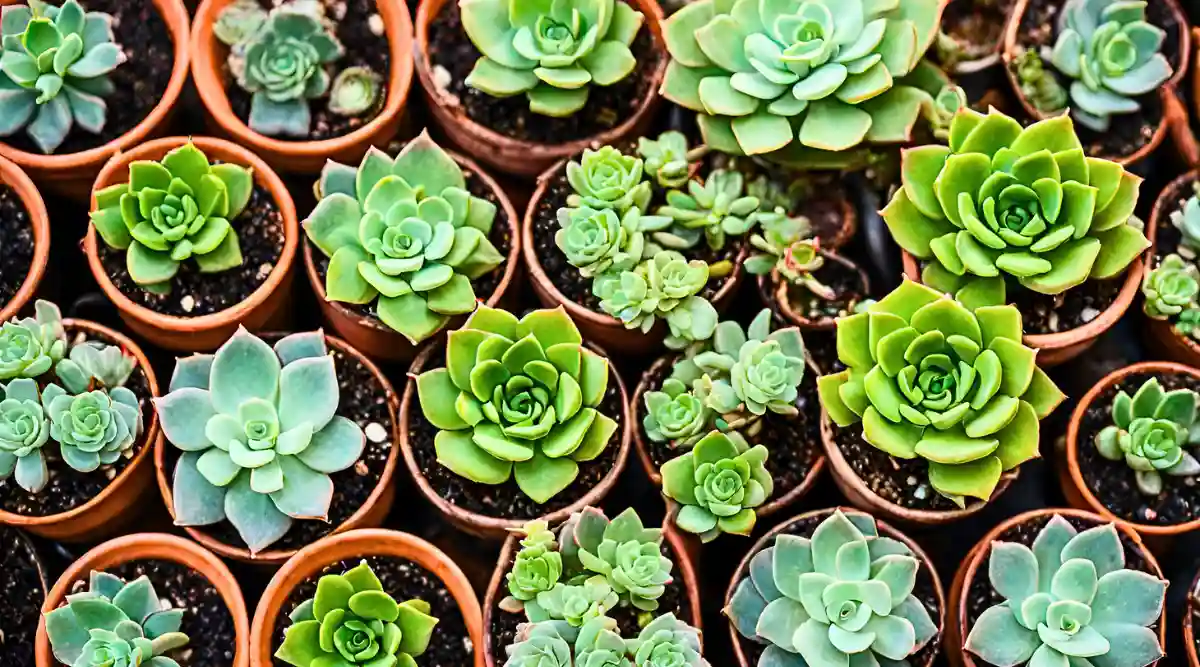Key Takeaways

Reasons For Succulent Changing color to Light Green
Your succulent is turning light green because it lacks adequate sunlight, is overwatered, or is exposed to cold temperatures – causing it to lose its vibrant colors.
Here are the reasons in detail:

Over and Under Sunlight Exposure
Succulents need at least 6 hours of direct sunlight per day to maintain their vibrant colors.
Without adequate sunlight exposure, the leaves fade and turn light green or yellow as they lose their strong pigments.
Not only these, but if these are overexposed to the full sun, then their leaves may change color and turn pale green may also be happening in your case.
Overwatering
Too much water dilutes the colorful pigments in succulent leaves, turning them pale green. Always allow the soil to completely dry between waterings to prevent moisture stress.
Cold Temperatures
Exposure to cold temperatures and drafts can cause succulents to lose some of their bright pigments, causing the leaves to turn green and dull in color.
How to Fix Your Succulent Turning Light Green?
To fix your succulent turning light green, provide more gradual sunlight, water only when completely dry, and consistently keep it in warm temperatures between 70-80°F.
Let’s explore the fixes for your light green succulent in more detail:
Boost Sunlight Gradually
Lack of adequate sunlight is one of the most common reasons for your green succulent to lose color and turn light green. Succulents thrive best with at least 6 hours of direct, unfiltered sunlight per day.
If your plants are in low light conditions indoors, consider moving them closer to bright, south-facing windows where they can soak up more rays.
Be careful not to place them directly on the windowsill if it gets glaring in the afternoon light. This can sunburn the leaves. You want bright but gentle light.
It’s best to acclimate succulents slowly to increased light levels to prevent leaf scorch. Start by placing them closer to the window for just 2-3 hours per day, then gradually increase the time over a week or two.
Learn more about complete succulent care in this guide.
Use Supplemental Lighting
If natural window light still doesn’t seem intense enough for your light green succulents, you can provide full-spectrum grow lights to simulate the qualities of outdoor sunlight.
Look for bulbs that provide light in the 6000-6500K color temperature range. Aim to position grow lights 6-12 inches above the plants for 12-16 hours daily.
Slowly move lights closer or increase hours as plants acclimate.
Water Only When Dry
Overwatering is another cause that causes your succulent to change color and lose their gorgeous colors.
Check soil moisture before watering and only water when the potting mix has dried out. To check, stick your finger into the soil to the second knuckle.
If it feels dry and crumbly throughout, it’s time to water.
Allow excess moisture to drain fully from the drainage holes at the bottom, then do not water again until the soil has fully dried. Drainage is critical to prevent soggy soil.
Withhold Water in Winter
Succulents need less frequent watering in winter when growth has slowed. Only provide occasional sips of water every 2-3 weeks if leaves start to wrinkle.
Avoid wet soil in dark winter conditions or roots may rot. Resume normal watering in spring and summer when sunlight levels increase.
Maintain Ideal Temperatures
Temperature also affects bright green succulent color and appearance. Chilly drafts, frequent temperature shifts, and anything below 50°F can cause succulents to turn green or become stressed.
Move potted succulents away from drafty windows, vents, and excessive air conditioning.
Ideally, they prefer consistent warm temperatures between 70-80°F during the day and 50-55°F at night for optimal coloration and health.
This mimics their native desert climates. Provide heating pads or grow lights to maintain warmth if needed.
Be Patient for Color Return
Even if care techniques are corrected and optimized for your light green succulents, it will still take patience and time for their vibrant colors to return to full glory.
The pigments and hues may start to show faint improvement in just a few weeks but it can take 2-3 months for full color restoration.
Every succulent is unique but with attentive care, most will regain their signature colors.
Consistently nurturing succulents with adequate sunlight, conservative watering, warmth, and drainage will get struggling plants back on track.
Properly caring for light green and fading succulents prevents further decline and allows their intrinsic vibrant palette to blossom again.
Further Reading:
Not only light green, your succulents may turn to any of these colors. You can read these guides below:
- Succulent Leaves Turning Yellow
- Succulent Turning Red
- Succulent Turning Purple
- Succulent Turning Black
- Succulent Turning Pink
- Succulent Turning White

